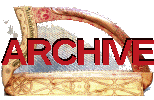
|
Tuning, Temperament & Intonation: source documents
Edward Bunting
Bunting collected music and information from the last of the old Irish harpers from the 1790s onwards. His field notebooks contain a series of tuning charts. For more information, and for links to online facsimiles, see my Tutor book tuning page.
Patrick Byrne
John Bell noted down tuning instructions from Patrick Byrne in the early 19th century:
|
“ G on the violin, you tune the 5th to G which is D. Then you tune the octave below to that D. Then you tune the 5th to the low D, which is A. Then you tune the 5th above A which is E. Then tune the octave to that E below. Then you tune the 5th to E above which is B natural. Then you tune the 5th to B natural which is F sharp.Then you tune the octave to F sharp below. Then you sound the G on the violin & B & D, and the octave above which is G which makes a common chord. Then you tune all the instrument up and down by octaves. The above is the Ancient way of tuning the Irish harp. From Mr Byrne the Irish Harper, 10th July, 1849. „ | |
Note that Byrne omits tuning C: perhaps he just forgot. Also note that he specifies B natural and F sharp; perhaps this implies that as well as retuning with F natural, Byrne may also have sometimes retuned with B flat.
Gwilym Puw
The Welsh harper and scholarJ Stowell
An English manuscript miscellany of the 15th or 16th century in Trinity College, Cambridge, includes a single page of harp tuning instructions: <|
“
To set a harpe, factus per J Stowell
| |